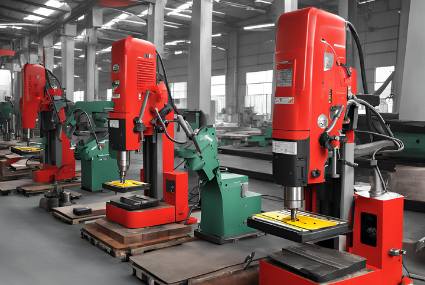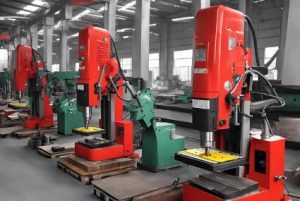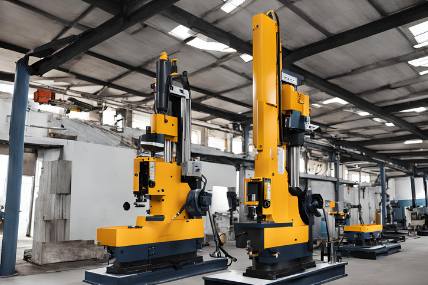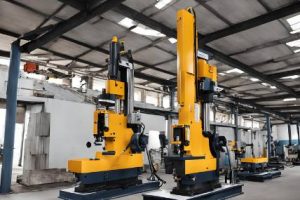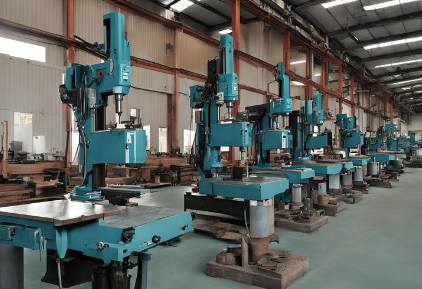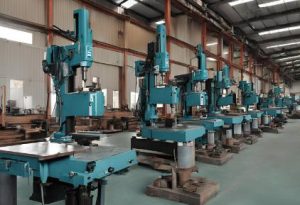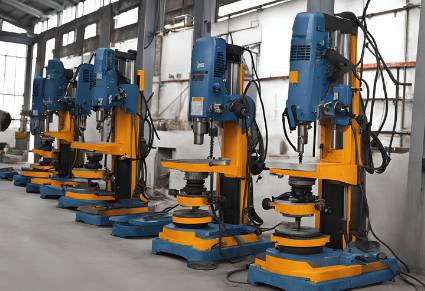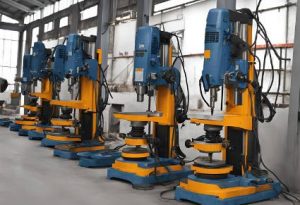Introduction to Machine Drills
A machine drill, commonly referred to as a drilling machine, is a versatile and essential tool used in various industries for creating holes in different materials. Drilling machines come in various types and sizes, each designed to handle specific tasks and materials. This comprehensive guide will explore the different uses of machine drills, their types, components, and the industries where they are most commonly employed.
Types of Drilling Machines
Drilling machines can be broadly categorized into several types based on their design, operation, and application. Some of the most common types include:
1. **Bench Drilling Machine**
Bench drilling machines are small, compact drills mounted on a workbench. They are ideal for light-duty tasks and are commonly used in workshops and small-scale manufacturing units. These machines are suitable for drilling holes in materials like wood, plastic, and light metals.
2. **Pillar Drilling Machine**
Pillar drilling machines, also known as column drills, are larger and more robust than bench drills. They are mounted on the floor and have a vertical column that supports the drill head. These machines are used for drilling larger and deeper holes in materials such as metal, wood, and plastic.
3. **Radial Drilling Machine**
Radial drilling machines have a radial arm that can be rotated and moved horizontally. This design allows for drilling holes at various angles and positions without moving the workpiece. Radial drills are used for drilling large and heavy workpieces, making them ideal for heavy-duty industrial applications.
4. **Gang Drilling Machine**
Gang drilling machines consist of multiple drill heads mounted on a single table. Each drill head can be operated independently, allowing for simultaneous drilling of multiple holes. These machines are used in mass production environments where high efficiency and precision are required.
5. **CNC Drilling Machine**
Computer Numerical Control (CNC) drilling machines are automated drills controlled by computer programs. They offer high precision and repeatability, making them suitable for complex and intricate drilling tasks. CNC drills are widely used in industries such as aerospace, automotive, and electronics.
Components of a Drilling Machine
A typical drilling machine consists of several key components, each playing a crucial role in its operation. These components include:
1. **Base**
The base is the foundation of the drilling machine, providing stability and support. It is usually made of cast iron or steel to withstand the machine’s weight and vibrations during operation.
2. **Column**
The column is a vertical support structure that connects the base to the drill head. It provides rigidity and ensures accurate alignment of the drill bit with the workpiece.
3. **Table**
The table is a flat surface where the workpiece is placed for drilling. It can be adjusted vertically and horizontally to accommodate different workpiece sizes and drilling angles.
4. **Drill Head**
The drill head houses the motor, spindle, and drill chuck. It is responsible for holding and rotating the drill bit. The drill head can be moved up and down along the column to adjust the drilling depth.
5. **Spindle**
The spindle is a rotating shaft that transmits power from the motor to the drill bit. It is equipped with a chuck that holds the drill bit securely in place.
6. **Motor**
The motor provides the necessary power to rotate the spindle and drill bit. The motor’s power rating determines the machine’s drilling capacity and efficiency.
Applications of Drilling Machines
Drilling machines are used in a wide range of industries and applications. Some of the most common uses include:
1. **Metalworking**
In metalworking, drilling machines are used to create holes in metal components for various purposes, such as fastening, assembly, and machining. They are essential in manufacturing processes for automotive, aerospace, and machinery industries.
2. **Woodworking**
Drilling machines are widely used in woodworking to create holes for screws, dowels, and other fasteners. They are also used for creating decorative patterns and designs in wood products.
3. **Construction**
In the construction industry, drilling machines are used to create holes in concrete, masonry, and other building materials. They are essential for installing anchors, bolts, and other fixtures in construction projects.
4. **Electronics**
CNC drilling machines are used in the electronics industry to create precise holes in printed circuit boards (PCBs) for mounting electronic components. They ensure high accuracy and repeatability, which are crucial for the performance of electronic devices.
5. **Medical Devices**
Drilling machines are used in the manufacturing of medical devices, such as surgical instruments and implants. They are used to create precise holes and cavities required for the assembly and functionality of medical devices.
Factors to Consider When Choosing a Drilling Machine
When selecting a drilling machine, several factors need to be considered to ensure it meets the specific requirements of the application. These factors include:
1. **Power**
The power of the drilling machine determines its ability to drill through different materials. For example, drilling through hard materials like metal and concrete requires a machine with higher power ratings, typically around 1500 watts or more. For softer materials like wood, a power rating of around 450 watts may be sufficient.
2. **Drill Diameter**
The drill diameter refers to the size of the holes that the machine can create. This can be adjusted by changing the drill bit. The required drill diameter will depend on the specific application and the size of the fasteners or components being used.
3. **Speed**
The speed of the drilling machine, measured in revolutions per minute (RPM), affects the efficiency and quality of the drilling process. Different materials require different drilling speeds. For example, high-speed drilling is suitable for soft materials like wood, while lower speeds are needed for hard materials like metal.
4. **Precision and Accuracy**
For applications that require high precision and accuracy, such as electronics and medical devices, CNC drilling machines are preferred. These machines offer precise control over the drilling process, ensuring consistent and accurate results.
5. **Portability**
Portability is an important factor for applications that require drilling in different locations or on-site work. Cordless drilling machines offer greater mobility and convenience, as they are not restricted by power cords.
Conclusion
Machine drills are indispensable tools in various industries, offering versatility and efficiency in creating holes in different materials. Understanding the types of drilling machines, their components, and their applications can help in selecting the right machine for specific tasks. Whether it’s for metalworking, woodworking, construction, electronics, or medical devices, drilling machines play a crucial role in achieving precision and accuracy in manufacturing and assembly processes.
